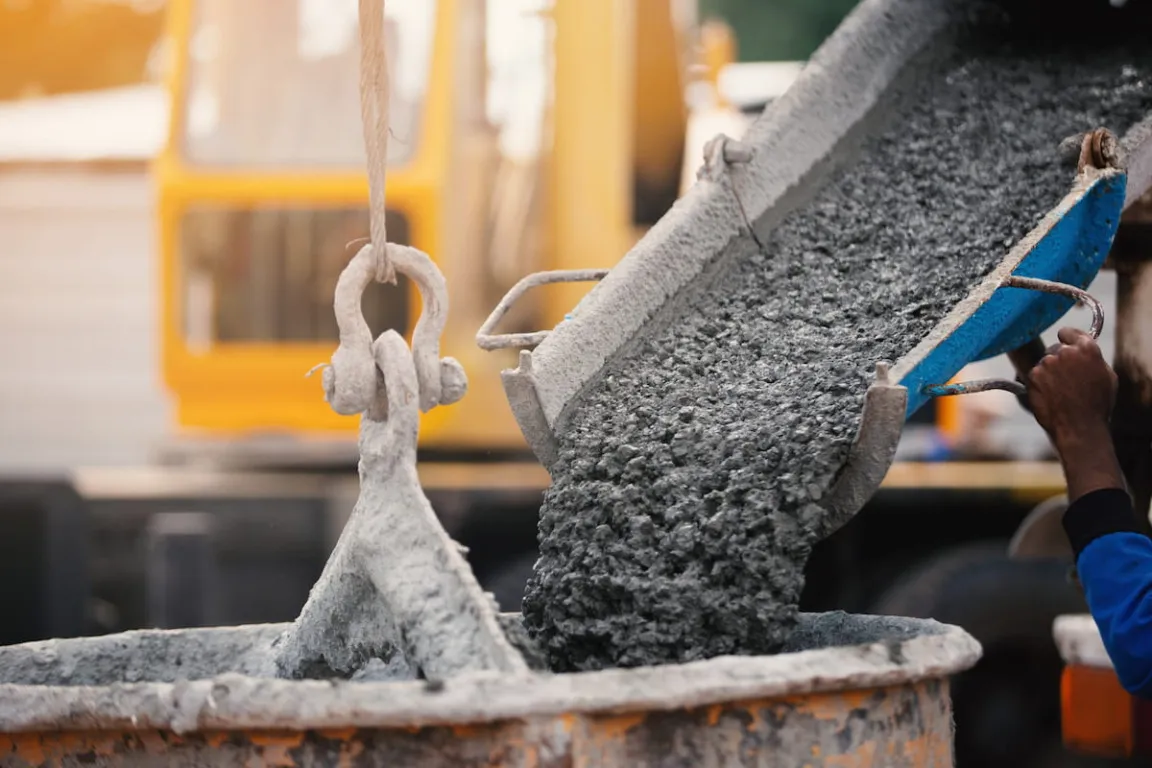Almost all construction buildings require concrete as one of the supporting elements to maintain the sturdiness and durability of the building, ranging from houses, high-rise buildings, or even earthquake-resistant buildings. One of the things that need to be considered in the use of concrete is the concrete mix design.
To achieve an optimal concrete formulation, the concrete mix design must be executed correctly to ensure the building can stand strong over time and withstand heavy loads. Below is an explanation of concrete mix design, including its definition, components, types, requirements, and key aspects to consider during the process.
What Is Concrete Mix Design?
Concrete mix design is a process of selecting concrete mix ingredients to consider the quality or ratio of concrete materials so that the concrete meets the specified quality and standards.
This process is crucial, as it requires a high level of accuracy, particularly in calculating the concrete mix design and ensuring it complies with the Indonesian National Standard (SNI) for concrete mix design to ensure optimal quality and strength.
The main purpose of concrete mix design is to create a strong concrete mixture that is durable and meets specific construction standards.
There are several key indicators in concrete production, namely the quality produced by the concrete, ease of construction, strength, and economic value. Therefore, in the concrete mix design process, paying close attention to the quality and quantity of the mix materials should always be a top priority.
The selection of concrete mix materials generally depends on field conditions and the available budget.
Concrete Mixers
There are several materials used in making concrete mixes that are used in concrete mix design. These materials are the core ingredients in the concrete mix. Here are the concrete mix ingredients you must know:
- Cement: This material is the core ingredient in the manufacture of concrete, which acts as a binder or adhesive in concrete.
- Water: Water will later play a role in constituting cement into a paste or cement liquid so that it can be used as a binder or concrete adhesive.
- Gravel: This material functions as a coarse aggregate that will be bonded with other materials using cement.
- Sand: Sand serves as a fine aggregate that will be mixed using cement paste to fill the voids in the coarse aggregate.
The formulation of the ratio of these concrete mix ingredients must be done with accurate and efficient calculations and requires a laboratory-scale trial mix if it requires a specific composition is required according to the needs of the project.
While determining the ratio of coarse and fine aggregates must be determined from the results of a material sieve gradation, also called the fineness modulus.
The results of the calculation will show the gradation of the density of the grain size of the material in the concrete mixture needed to facilitate the construction process.
Read also: How to Calculate Cement Requirements: Here’s The Guide
Types of Concrete Mix Design
Concrete mix design has several types that are often applied in various building constructions, which are as follows:
1. Nominal Mixes
The first type of concrete mix design is nominal mixes, which is a way of mixing concrete according to predetermined proportions, even without performing a mix analysis.
In practice, you only need to follow the parameters given by the concrete mix designer and there is no need to modify them.
The operation of this type tends to be quite easy, but it can only be applied under normal conditions without the requirement of construction area conditions.
2. Standard Mixes
The second type is standard mixes, which are concrete mix designs to be applied in a variety of conditions. The use of parameters is only specific to the nominal mix type, so in this type, an analysis must be carried out first to obtain a formulation that suits the construction needs.
3. Designed Mixes
Finally, there is the designed mix type where the designer plays a role in determining the quality and performance of the concrete. In addition, the producer will be in charge of determining the proportions of the concrete mixture. This type is considered effective for producing the right mix proportions and creating concrete with high economic value.
Concrete Mix Design Requirements
There are several important requirements that concrete designers or producers must consider when creating a concrete mix to ensure the final result is strong and durable. Here are the various concrete mix design requirements:
- Knowing the minimum compressive strength resulting from structural guidance.
- Determine the various equipment requirements that facilitate the work process for compaction purposes and must be adjusted to the compaction equipment that is available.
- Deciding on the maximum water-cement ratio and/or maximum cement content to provide the required durability according to the conditions of the construction area.
- Determine the maximum cement content to prevent the risk of shrinkage and cracking due to temperature cycling of the concrete mass.
- The use of admixtures should follow the dosage.
Read also: The Right Ratio of Cement and Sand for a Sturdy Building
Aspects to Consider
There are also various aspects to consider in concrete mix design. The aspects are as follows:
1. Compressive Strength
The first aspect is compressive strength. This is one of the criteria that concrete must meet. Compressive strength is the load per unit area of concrete that is determined according to the construction needs before mixing concrete.
2. Durability
Durability is the resistance of concrete that shows how strong it is in the face of various temperatures and uncertain environmental conditions. Durability depends on the ratio of water and cement in the concrete mix.
3. Workability
Finally, workability indicates that work can be done from the earliest stages to the finishing stages. The standard workability that is often and easily used is that if the slump is 12 cm, then the water requirement is 185 liters.
Standardization of Concrete Mix Design
In developing a concrete mix design, the preparation of the mixture must take into account performance in two key phases: the plastic phase and the hardening phase.
The plastic phase refers to the stage when concrete ingredients are mixed to form a soft, workable texture that can easily be shaped, similar to dough.
On the other hand, the hardening phase begins when the concrete starts to set and dry. During the plastic phase, the concrete mix must meet certain standards, including workability, cohesion, and sufficient setting time. This is crucial to ensure that the concrete achieves the required strength and durability, especially for pavement applications.
It is important to understand that a concrete batching plant is not only designed to produce concrete, but it is built to deliver concrete that meets the specifications for all types of construction projects.
From this, it becomes clear that choosing the right concrete producer is critical. Your building project needs guaranteed, high-quality materials, such as those offered by Semen Merah Putih, which is committed to delivering premium concrete products through its subsidiary, Beton Merah Putih.
Beton Merah Putih provides a quality-assured solution for concrete needs, namely Ready Mix Concrete, that complies with the latest construction standards and is very efficient and effective for contractors.
Beton Ready Mix is a concrete mixture that has been produced in batching plants with proportions of ingredients that match the project specifications.
For large-scale construction projects, ready-mix concrete offers quality assurance and timely delivery, both of which are essential for maintaining project productivity.
Additionally, contractors can avoid the risks of inconsistent mixes and material proportioning errors that may occur when concrete is mixed on-site.
Do not hesitate, contact us now to get more information about the various products of Semen Merah Putih and get the best construction solutions for your project!
Read also: Ready Mix Concrete: Types, Grades, and How to Make It



